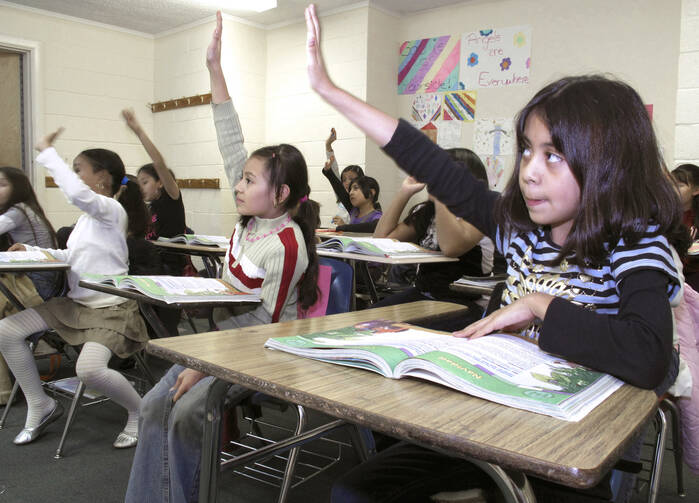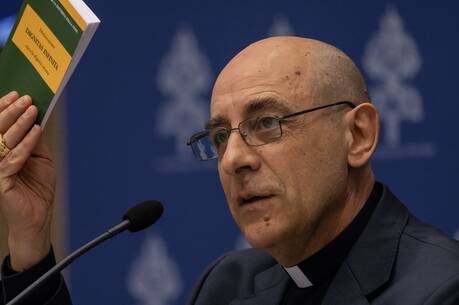Though not heralded by media, one of the most important presentations at the Nov. 10-13 meeting of the U.S. bishops in Baltimore came from the Education and Cultural Diversity Committees. The committees, headed respectively by Archbishop George Lucas of Omaha and Bishop Daniel Flores of Brownsville, Texas, urged the bishops to reach out to increase underserved populations in Catholic schools, especially Hispanics.
The impact of Catholic schools extends throughout the church and the bishops offered data to prove it. Who are more likely to remain faithful to Mass attendance? Graduates of Catholic schools. Data from the Georgetown University-based Center for Applied Research in the Apostolate (CARA) reports that only five percent of millennials who never attended a Catholic school go to Mass weekly compared to 39 percent who attended Catholic schools.
Who enters the priesthood and religious life? CARA has found that of the never-married millennial generation male Catholics (14 and older) who have attended a Catholic school, more than one in four indicted that they have considered becoming a priest or brother. Only about one in ten who did not attend a Catholic educational institution indicate this. Among female Catholics (14 and older) who attended a Catholic school, 13 percent or more indicate that they have considered becoming a sister. Only six or seven percent who did not attend Catholic institution indicate this.
Who are more likely to be confirmed in the Catholic faith? CARA found that only two-thirds of self-identified Catholics who never attend a Catholic school are confirmed compared to 82 percent of those who attend a Catholic primary school and 91 percent of those who attend a Catholic high school.
Who are the future church leaders? According to CARA, “half or more new priests (50 percent) and brothers (45 percent) attended Catholic primary schools as did 41 percent of new sisters and 45 percent of young lay ecclesial ministers.”
Fidelity to Mass, participation in the sacraments, consideration of priesthood and religious life, ordination, religious profession and pursuit of a career in lay ecclesial ministry. These are important to Catholic identity and the future of the church. Their importance is magnified in the Hispanic community as the Hispanics continue to increase in the church in the United States.
Archbishop Lucas and Bishop Flores urged bishops to make a commitment to promotion of Hispanics and other minority groups and promoted new ways of outreach.
Among the important points:
Outreach to Hispanics means a different approach, one that emphasizes relationships, both in the diocese, parish and neighborhoods. In the Hispanic community, madrinas are important. They are trusted neighborhood women who successfully let Hispanics know that Catholic schools are there for their children. As recruiters, the madrinashelp offset the elitist image created by Catholic schools in Latin American countries, where the institutions are seen as havens for the ultra-rich and out of reach of ordinary Catholics, not to mention the poorer ones.
Relationships also suggest the importance of Spanish-speaking staff, especially at the front desk of the school, where newcomers receive their first impressions.
A June CARA white paper, “Catholic Schools in the United States in the 21st Century: Importance in Church Life, Challenges and Opportunities” culled data from the U.S. Census Bureau and National Catholic Educational Association, and the results startle. Said CARA: “50 percent or more of the school age Catholic population at all levels during the 2013-2014 school year were Hispanic. During this school year, Catholic educational institutions enrolled less than 15 percent of the school age population at each level. Reaching out to and increasing enrollment among Hispanic Catholics would be vital and important to any efforts to increase enrollments nationally.”
The church needs to be intentional with a message from the local bishop to the local Hispanic community, from superintendents of schools to principals, from principals to parishioners that Hispanic children are both welcome and wanted in Catholic schools. It is time to work vigorously toward this end.
Mary Ann Walsh, R.S.M., is a member of the Northeast Community of the Sisters of Mercy of the Americas and U.S. Correspondent for America.








